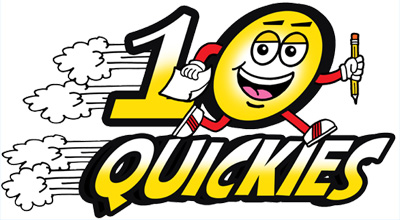Educational Effective Teaching Strategies Article |
|
|
 Teaching Strategies - Why Do Some Succeed, Where Others Fail? Article Summary: Success in the classroom analyzed from a different perspective. Wonder what to do when a lesson fails? Read about these effective teaching strategies you can use in your classroom to increase student success with your lessons. ------ Why Do Some Succeed, Where Others Fail? by Gregory L. Gomez Here's an age old question that most of us have asked from time to time: why are some people successful and others not? This may seem like a simple, straightforward answer, but to answer this with a simple reason will not give the question or underlying reason enough respect as to why one person achieves what they set out to accomplish, whereas another either fails, or simply quits trying. Why do some people succeed where others fail? If you take a moment to think about what this question actually entails, you will see a much bigger picture as to what it represents. Imagine if Alexander Graham Bell was not successful in creating the phone, where would we be now? What if Henry Ford did not revolutionize the production of automobiles so the general public could own their own car? What if the Wright Brothers were convinced they would never invent something that can maintain flight? Imagine what our world would be today without the accomplishments of these famous individuals. In other words, imagine what life would be like if these people did not succeed at their intended goal. Now you may be thinking something along the lines of this: "What the heck does this have to do with me and my classroom of 3rd grade students?" Use the Teaching Strategies That Work For You!In truth it's really not that much different when you compare the two. In order to be successful in any given task, whether it be trying to simply cross the street at an intersection, or solve an advanced calculus problem, the individual must believe that the task is truly possible. They must believe wholeheartedly that what they are taking on can actually be accomplished. Without that drive, the belief that is pushing them to strive for success, more than likely they will fail.Therefore, it is imperative as educators to treat every lesson we present to our students with the same amount of respect, with the same amount of belief. The belief that this activity, lesson, or unit will be successful, and if anything doesn't work as planned will be modified and implemented the next time with success. These are the teaching strategies that are going to make a difference in the end. Granted sometimes we will teach a new lesson in our classroom and unfortunately it may fail. Completely bomb. It is with these specific situations when we need to directly reflect on what actually happened and keep that underlying question in mind: Why are some successful where others fail? Here is the moment when we decide what to do - dump it or revise the plan and try it again. There is absolutely nothing wrong with trying something new with your class and it unfortunately bombs. That is the learning process of an educator. However what we must be sure to do is pick ourselves up and analyze the whole situation. What went well, what went wrong? Take time to replay the whole scenario in your head from start to finish. How did the lesson start off? Were the students focused on you and what you were presenting? Did you have a catchy introduction, a way to peek their interest? If the students were not focused, what could have been the reason for the distraction or lack of focus? Replay the entire lesson in your mind and take note what was positive and what wasn't. You want to build off the positives in hopes that when you retry or re-teach the lesson, those negatives become positives. Maybe the students needed more explicit directions, or the steps broken down into smaller segments. Possibly the lesson was too much for one sitting and could actually be divided into two, or three different lessons. Maybe the students need to be taught what to do at the end of the lesson because you noticed it got too chaotic during cleanup. Put it down on paper. It's so helpful to write everything down so you can visually see what went well and what didn't. A simple two column list with positives on one side and negatives on the other will work. Don't forget to highlight everything that went well in the lesson for these are the areas to build off. In regards to the negatives, determine what could be some possible alternatives or solutions to what went wrong. This is what you want to get in the habit of doing, especially after teaching something new to your class. Doing so will help ensure that you are successful with everything you decide to teach your students, and therefore you will never have to accept defeat and feel that you failed with anything in your classroom. Use these effective teaching strategies and watch your effectiveness soar through the roof. --- Gregory L. Gomez, M. Ed, has been teaching 5th grade in the Los Angeles Unified School District for 15 years. He created 10Quickies.com to help teachers and parents provide children with a fun and creative way to review grade level math standards and concepts. Visit today and get valuable teaching strategies along with FREE math review worksheets to download for 4th and 5th grade students. We hope you found this article informative and that you will be able to take some of these ideas and incorporate them into your classroom. We invite you to take a moment to download two FREE math review worksheets that students have found exciting and inspirational. These aren't the typical worksheets that you've seen before, so don't be surprised if you find your students begging for more! |


